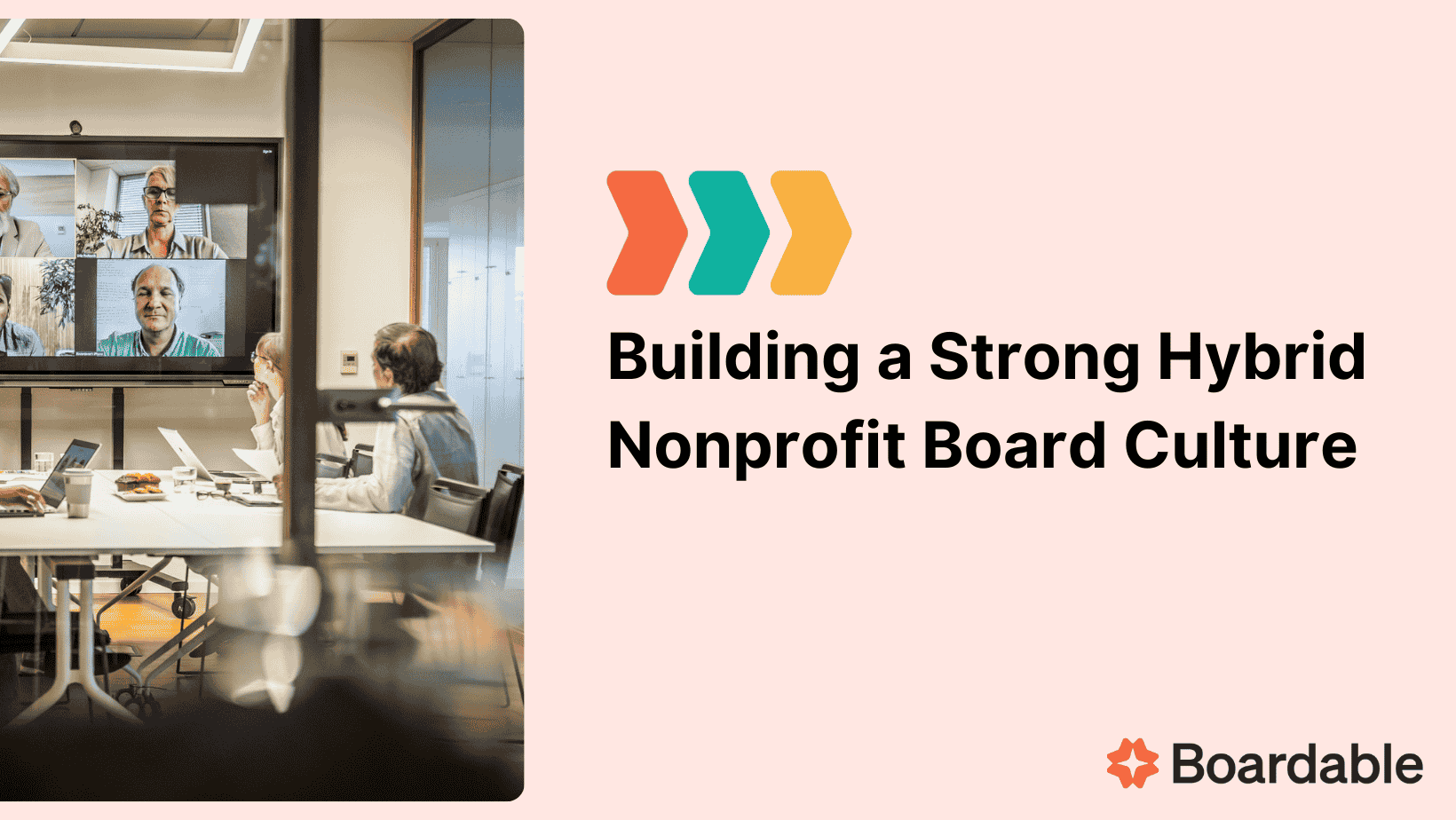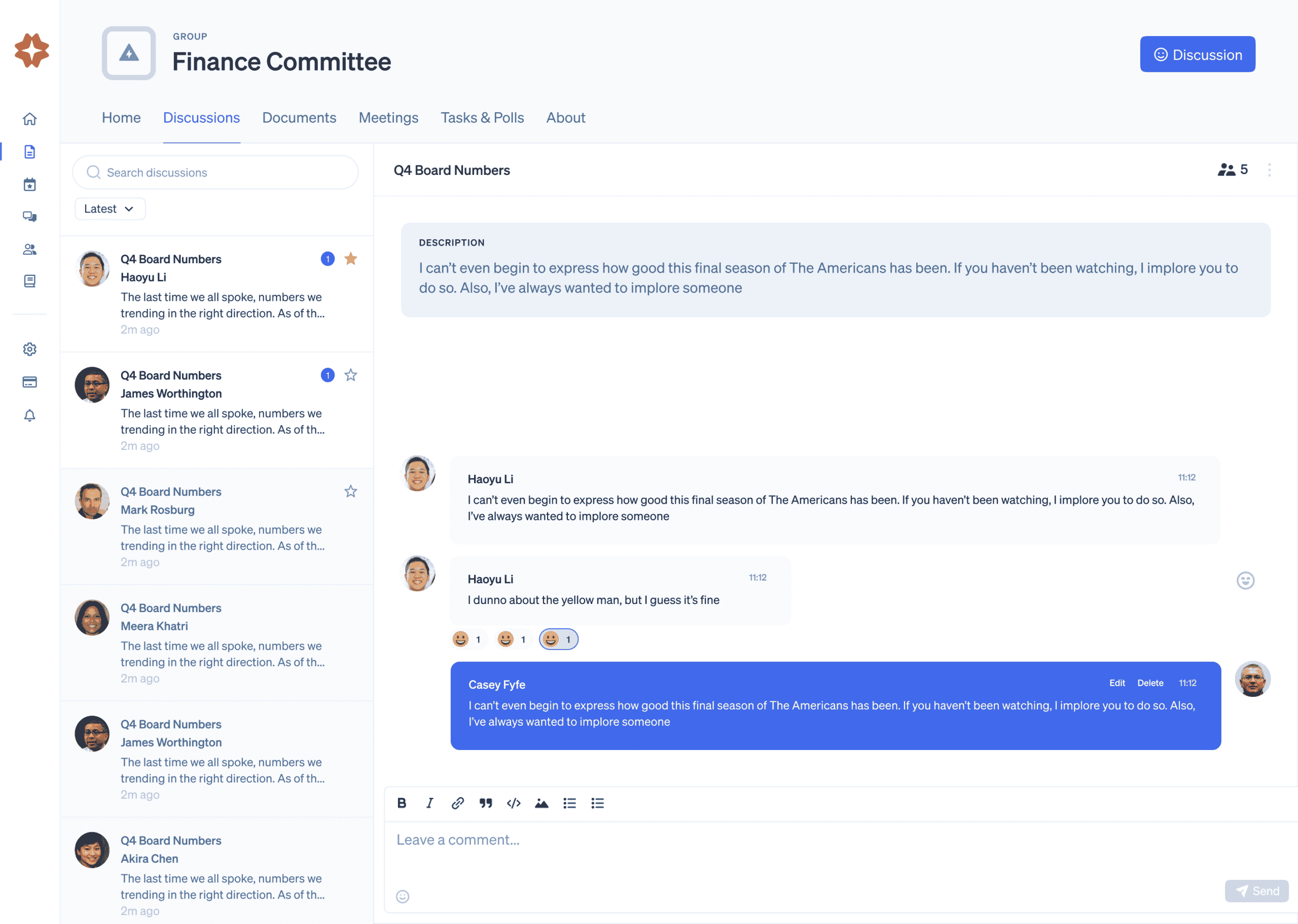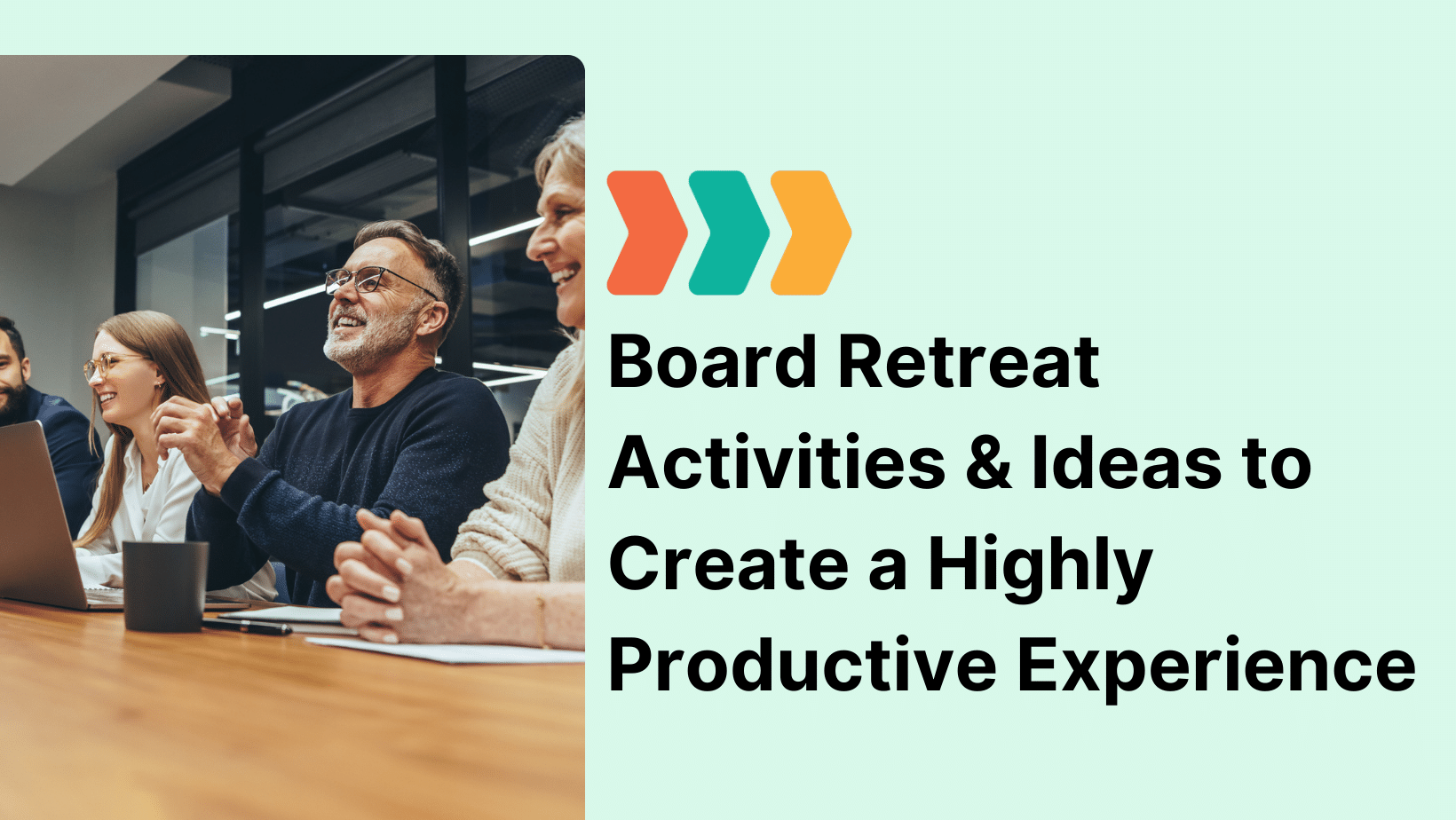As more organizations embrace hybrid work environments, nonprofit boards are adapting to this new dynamic. With members often spread across different cities, states, or even countries, it’s essential to create a strong hybrid nonprofit board culture that seamlessly blends in-person and virtual participation. Hybrid models also provide much-needed flexibility for those dealing with unexpected challenges like illness or demanding schedules, offering an inclusive solution for all board members.
A hybrid culture not only allows for diverse perspectives by removing geographical constraints, but it also makes participation easier for members who may find in-person meetings difficult due to illness, caregiving responsibilities, or work schedules that don’t align with traditional meeting times. The question is: How do you ensure everyone feels connected, included, and engaged—whether they’re at the boardroom table or joining from home?
What Does a Strong Hybrid Nonprofit Board Culture Look Like?
A strong hybrid nonprofit board culture ensures that all board members feel like they’re part of the same conversation, no matter where they are located. It’s not just about making sure remote members have a video conferencing link—it’s about building a collaborative environment where everyone can participate equally, even if they can’t be there in person.
For nonprofit boards, balancing the flexibility of hybrid meetings with the potential hurdles of communication gaps or disconnection is crucial. So, how do we keep everyone engaged, no matter where they’re joining from?
How to Build a Strong Hybrid Nonprofit Culture
1. Prioritize Communication
In a hybrid nonprofit board, communication can make or break the experience. Clear agendas, detailed minutes, and consistent follow-ups help keep everyone informed and aligned. Casual check-ins by phone between meetings can also help maintain those important relationships that are often lost in a virtual setting.
2. Ensure Everyone Has a Voice
A successful hybrid board culture ensures both in-person and virtual members are heard. It’s easy for people in the room to dominate the conversation, but good facilitation ensures remote members can fully engage. Tools like real-time polls and chat features can make it easier for everyone to participate, regardless of their location.
A great feature of the Boardable Video conferencing tool is its ability to track the order in which people raise their (virtual) hands, making it easy to ensure everyone gets a chance to speak.
3. Build Trust Through Accountability
Trust is essential in any board, but it’s particularly important in a hybrid setup. By fostering a culture of accountability with clear expectations, all members can feel confident in their roles. Transparency around task progress is key to building that trust and maintaining smooth operations.
How Boardable Enhances Hybrid Nonprofit Board Culture
At Boardable, we understand the unique challenges that come with building a hybrid nonprofit board culture. That’s why we’ve created features specifically designed to support hybrid boards, making it easier for everyone to collaboration, stay organized, and feel included—no matter where they are.
1. Easy-to-Use Virtual Meetings with Boardable Video
Running a hybrid board meeting should be simple, and with Boardable Video, it is. This feature is integrated directly into the platform, allowing your board members to join meetings from anywhere with just one click. no need for multiple tools — everything you need for a smooth meeting is right in Boardable.
Boardable Video also allows for easy screen sharing, document review, and real-time voting, ensuring that virtual attendees can participate as fully as those in the room. Plus, with optional AI-generated summaries, your board members will never miss a key takeaway or action item, streamlining follow-ups and decision-making.
2. Seamless Document Sharing with the Document Center
Sharing documents is crucial for board collaboration, and Boardable’s Document Center simplifies this process. Whether it’s meeting materials or follow-up reports, all board members can access the same documents at the same time—before, during, or after the meeting.
In a hybrid setting, having a centralized location for all your documents ensures that no one whether virtual or in-person, feels left out. Members can easily reference materials during discussions and stay on the same page, which is essential for an effective hybrid nonprofit board culture.
3. Task Tracking for Accountability
To foster trust and transparency in a hybrid nonprofit board culture, Boardable’s Task Manager allows for easy assignment of tasks, setting deadlines, and tracking progress—all in one place. This ensures accountability for both in-person and remote members, helping everyone stay aligned on board goals and responsibilities.
4. Real-Time Polling and Voting
With Boardable’s polling and voting features, hybrid boards can conduct real-time votes, ensuring all members—remote and in-person—can participate in key decisions equally. This removes barriers for remote members and ensures everyone’s voice is heard.
5. Engagement Tracking
Engagement can be tough to track in a hybrid setting, but Boardable’s tools make it easy to monitor attendance and follow up on tasks. This helps to keep every member connected and actively contributing, no matter their location.
Setting Your Nonprofit Board Up for Success
Creating a strong hybrid nonprofit board culture is essential for modern nonprofit organizations. By blending communication, inclusivity, and trust, nonprofit boards can thrive in hybrid environments. With the right tools—like those offered by Boardable—your board can overcome challenges and create a strong, connected team ready to make an impact.




